Ten years later, this body of water is breaming with life of all sorts. The transition from artificial to natural habitat is highly evident. There are at least two species of turtles, several varieties of frogs and fish, several species of trees, several varieties of wildflowers, water lilies and other aquatic plants, ducks, wasps. dragonflies and other forms of life. Raccoons, rats and possum have always been on the pond at night. Sometimes there is track evidence of a White-tailed deer or two present. Our Parks Dept planted a number of native trees over the years which now thrive in the park, adding to the landscape. Residents have planted a few trees along the shoreline and in the green area also. Some of the native pine trees in some areas of the pond are now light deprived by an invasive species of tree, the Chinese Tallow. The community recognizes this issue and has a plan to remove the Tallows this fall and replace them with native trees. The pond usually contains plenty of fish with a natural ecology distinguished by shoreline plants, turtles and water fowl. It has a very large exposure to the sun which causes over heating, large CO2 concentrations, and algae growth in the summer. Inversion of temperatures in the fall causes some of the algae to surface and causes a stench. The pond has suffered at least one fish kill over the past few years, probably due to the oxygen level of the water. Therefore the pond requires human intervention to maintain it's ecology. That process the Parks Dept usually does adequately. Sampling of fish species indicates that the perch and bass share a symbiotic life cycle and have a natural relationship just like in other nearby ponds. The quantity of baby fish normally reveals a very healthy pond and an adequate natural restocking life cycle. In latter years, catfish have been introduced into the pond, perhaps putting the pond a little out of ecological balance. Deliberate stocking of the pond originally excluded the catfish. Also noted recently is Alligator Weed appears to be on the pond. This is also an invasive plant which comes from South America and needs to be removed, if I have identified it correctly.
The enemies of the pond? The two legged ones are the primary enemy of the inhabitant of the pond. Some people who do not understand how the ecology works. Some throw their trash in and around the pond, and some introduce species into the pond without proper regard to ecology design. We have many visitors now from inside and outside of The Woodlands who are not in tune with the workings of nature, but like to enjoy the natural amenities of the park. Another enemy of the pond is the water runoff from the local neighborhoods which brings excessive nutrients into the pond, primarily in the form of nitrogen from artificial fertilizers.
Despite the problems caused by visitors and the stresses on the summer pond to its dependent inhabitants, the pond has naturally maintained itself and diversified over the past several years without much human intervention. This year is shaping up to be an exception. There are more outside visitors using the pond daily. Some ignore the rules and take fish out of the pond for example. Some just throw their trash on the ground and in the water as they stroll around the pond. Some visitors are in route to other destinations by foot, leaving their garbage on the ground when walking the dog or involved in other recreational pastimes here. Therefore, before introducing the primary objective of this post, I wanted to note the external influences on the pond's ecology. Now to its primary objective, the 2008 living pond.
I have included some photographs here of the plant life along the pond and how the ecology works with references below. Also included are photographs emphasizing beauty, value and appreciation of such an amenity in the neighborhood.
First let's begin with the plants along the shoreline. These are primary contributers to the bottom of the food chain for the pond's inhabitants. The Cattail is one such participant in this ecology. From Texas A&M's Aquaplant, a Texas cooperative extension program :
"Submerged portions of all aquatic plants provide habitats for many micro and macro invertebrates. These invertebrates in turn are used as food by fish and other wildlife species (e.g. ducks). After aquatic plants die, their decomposition by bacteria and fungi provides food (called "detritus") for many aquatic invertebrates."
This I call the golden rod. With the right light, its beauty in early summer is something to behold. Later on in the season, the birds will relish its fruit. 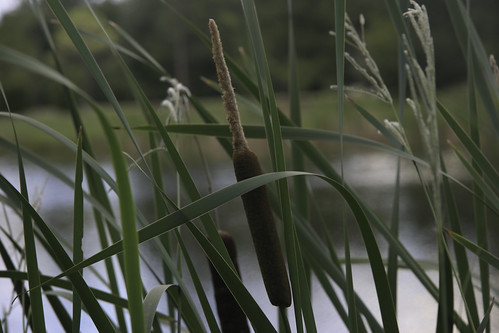
This is a more proper photo of this plant in a more normal lighting situation.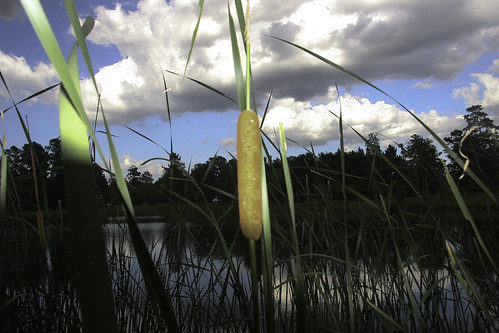
The Cattail with the tree line as background, clouds drifting by overhead, and the sunlight peeking through the trees from the west, captures somewhat of a romantic tranquil moment on the pond.
Other shoreline plant life includes the Bald Cypress trees, some of which are about 7-8 years old now. 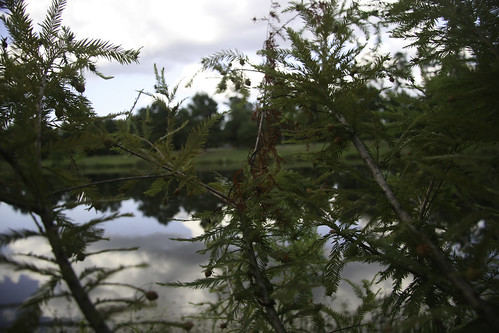
Cypress tree planted as a seedling for the future of the pond, to provide shade and a root system for small fish, frogs and ducks to hang out. Only about 15-20% of the shoreline will have this tree. Most of the shoreline will have the bulrushes and the reeds to provide a very healthy place for the fish to reproduce and survive. A Cypress dome (their above-ground root system) is known to be excellent places for diverse lifeforms within the pond ecology system. Our ducks like to hang out around one of the larger domes on this pond. 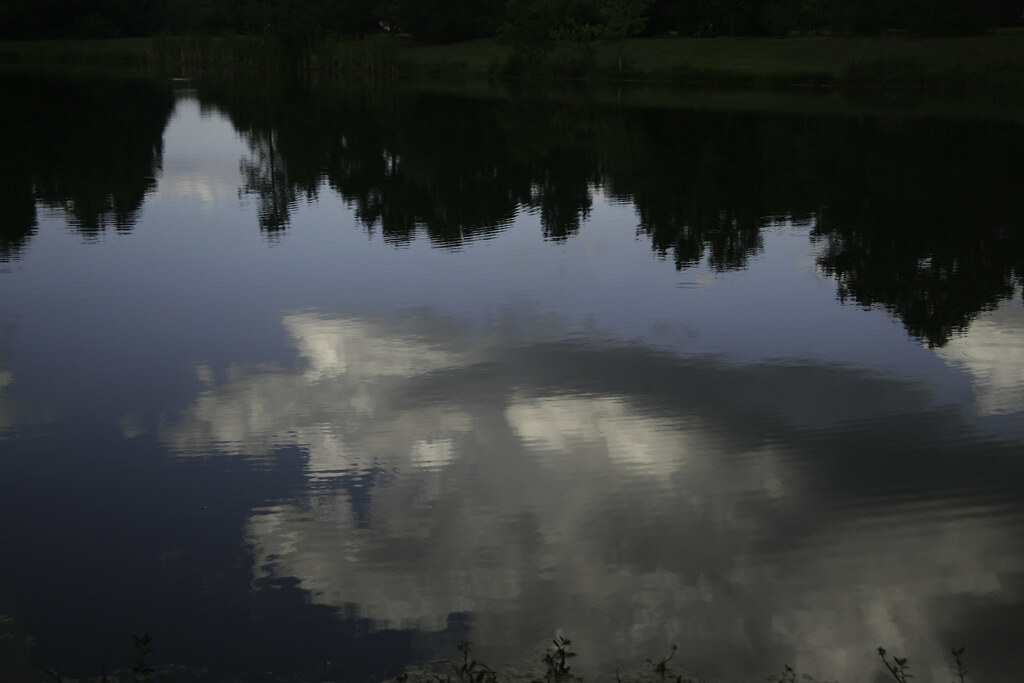
In this photo the pond simply functions as a mirror. On a lazy summer afternoon, the wind was lightly pushing the trees to and fro and moving puffs of clouds over the pond. Here is a mirrored image of the sky and underlying landscape as a reflection off of the water of the pond.
These flathead minnows are the bread and butter of mosquito control. They eat larvae near the banks of the pond, as part of their diet. This often missed fact about the ditches and ponds of the area explains why the mosquito is not usually so prevalent around bodies of water. Larvae are near the bottom of the food chain. Additionally, it has been found that pond spiders like to eat the mosquito larvae.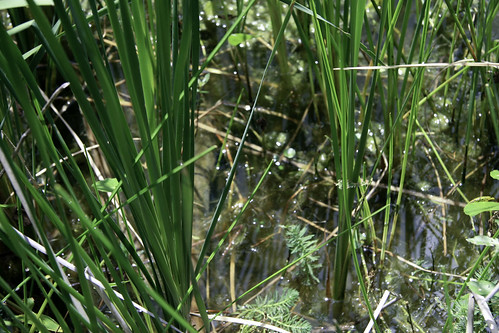
Here in the reeds and water grasses is where you find the bottom of the food chain. Mosquitoes will lay their eggs here; decaying vegetation provide food for various bugs and worms; newly hatched fish hide here and feed off of the lower food chain sources. I have not seen a snake on this pond with one exception years ago.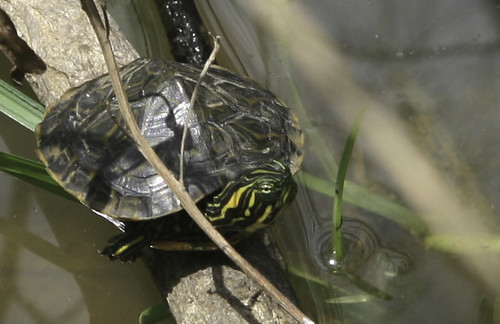
Sometimes if you stop and look closely, a new inhabitant will appear. This little turtle surprised me. All the Red Ear turtles jumped in the water but this little guy just kept an eye on me.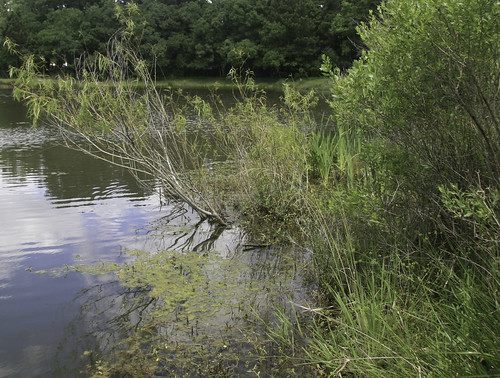
There is one Willow sitting on the banks of the pond. This also adds to the diversity. I do not know how this tree ended up on the pond but it is a welcome occupant. Birds like to nest in the Willow and the ducks appreciate the Willow's limbs over the water for protection. 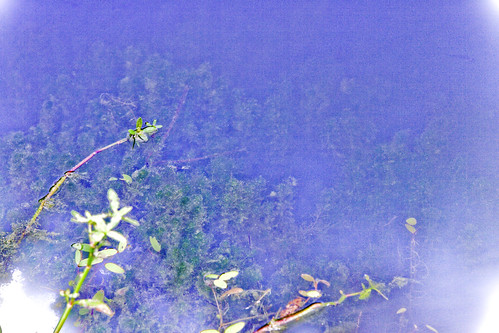
A submerged garden reveals the rich ecology on the floor of the pond. This is the defining point of the pond itself. It is not a lake due to the shallow nature of the body of water and that vegetation is rooted on its floor from one end to the other. 
At the surface, one will find a floating species of plant, but notice its root system down to the bottom.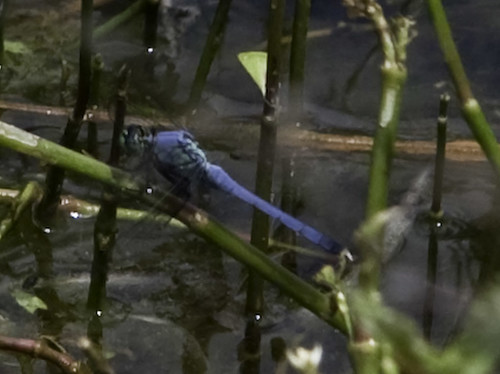
The blue dragonfly was abundant in the full sun this particular day. 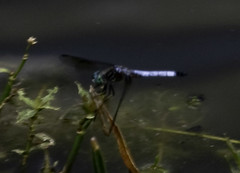
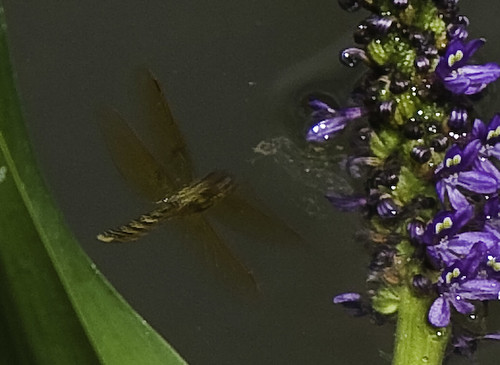
But this unusual dragonfly was also there. I caught him in my lens in flight, a very difficult feat to accomplish.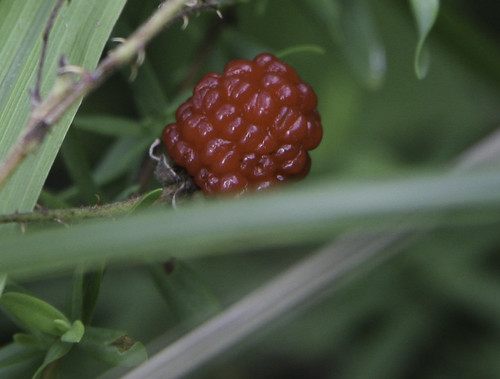
Dewberry vines produce fruit for the birds along the shoreline during the Spring and early summer. This is one of the last berries quickly ripening. 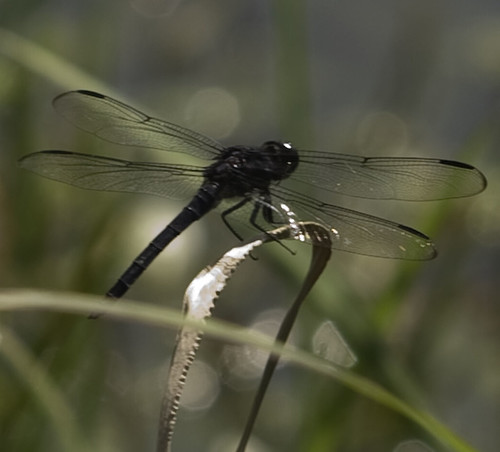
The Black Dragon as I call him. There will be a article on him in this blog soon.
Now for some wild flowers on the pond in June, just to remind the reader - take time to smell the flowers: 
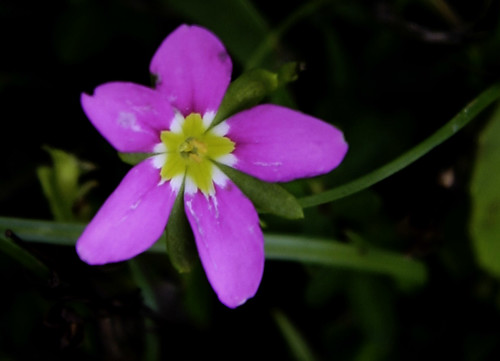
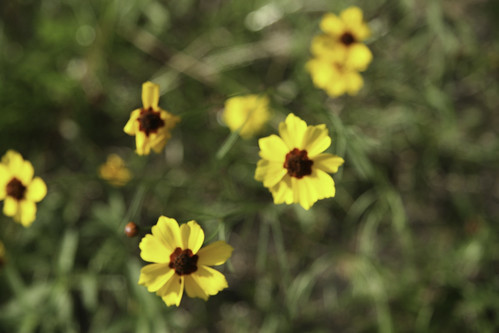

References:
1. USDA
There is more about this pond in the parks section of the blog. Click here.


No comments:
Post a Comment